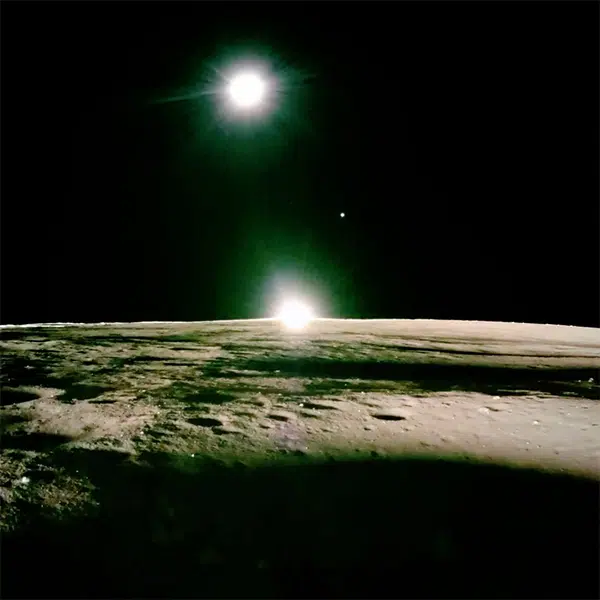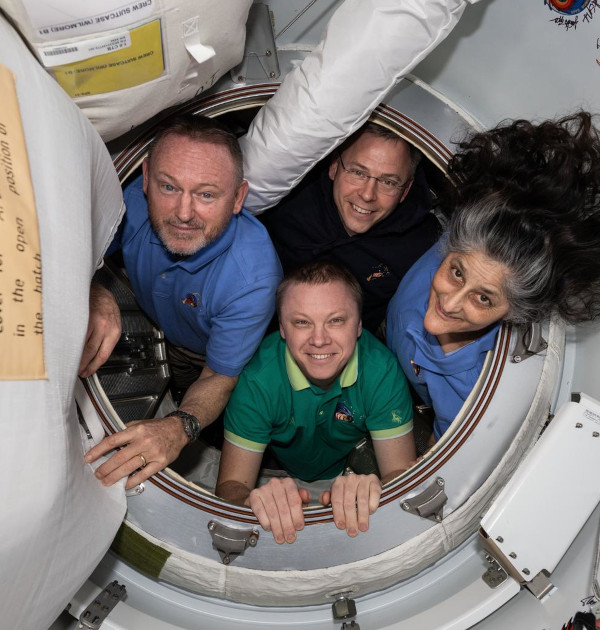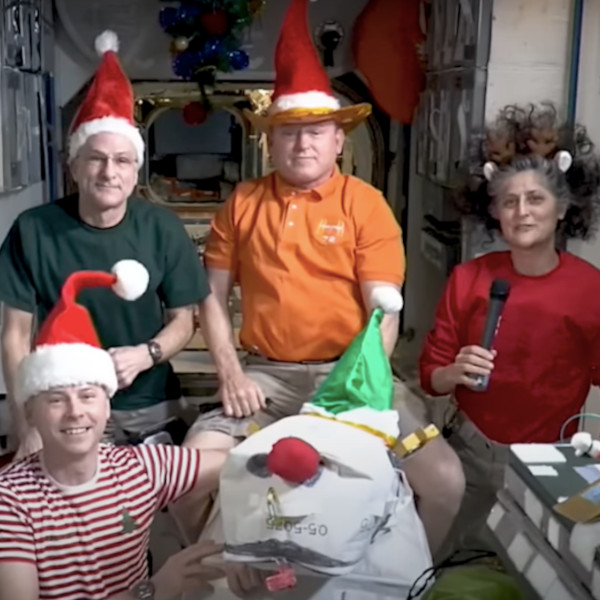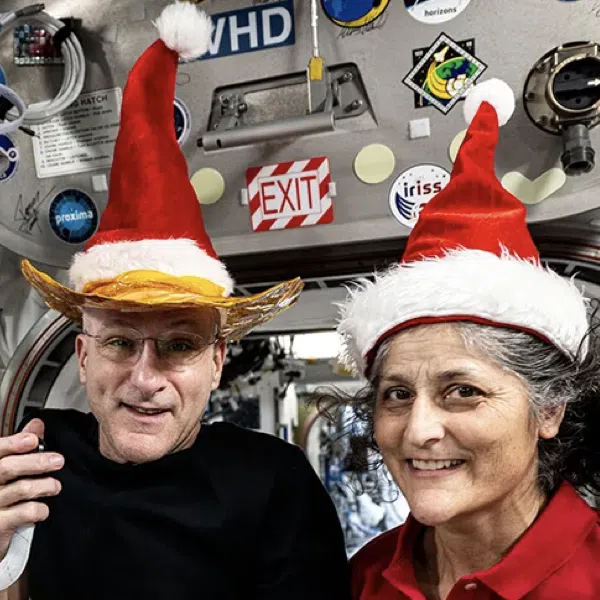
Artist rendering of the Parker Solar Probe (Photo: NASA/Johns Hopkins APL/Steve Gribben)
After launching in August 2018, the Parker Solar Probe has transmitted its first scientific observations back to NASA—and the results don't disappoint. The robotic spacecraft, which has gotten closer to the Sun than any previous probe, has taken the first ever photograph inside the star's corona. It's a triumph for the field of heliophysics—the study of the physics of the Sun—and opens doors to solving some of our biggest solar mysteries.
The Parker Solar Probe took the photo on November 8, 2018, when it was just 16.9 million miles from the Sun. While this may seem far, keep in mind that the Sun is 91 million miles from Earth. Previously, the Helios 2 spacecraft had the record for getting the closest to the Sun when it reached 43.4 million miles from the star in 1976. This is just the beginning of Parker's mission, which will last until 2025, and it's already moving into unchartered territory.
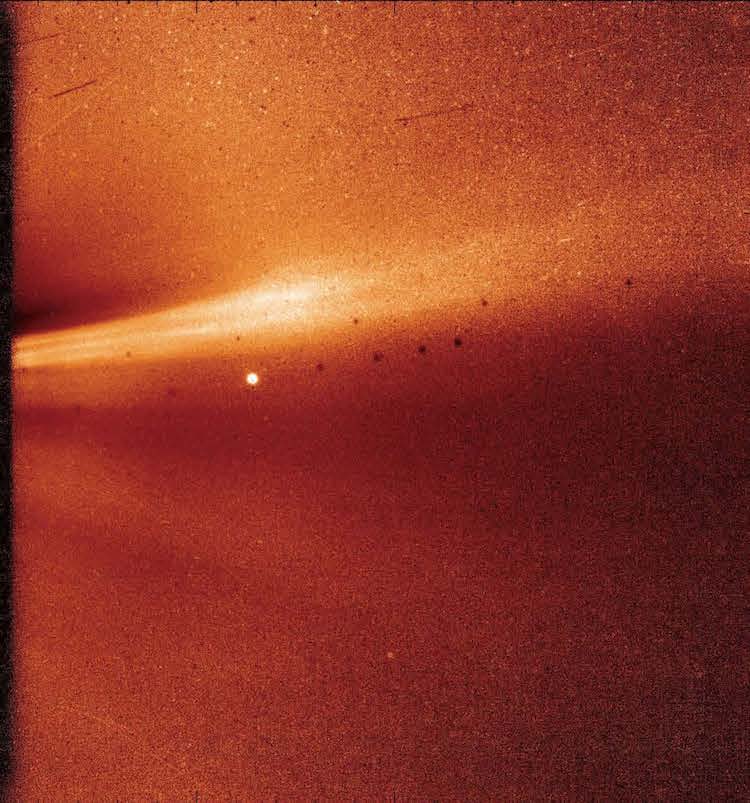
This image from Parker Solar Probe's WISPR (Wide-field Imager for Solar Probe) instrument shows a coronal streamer, seen over the east limb of the Sun. Coronal streamers are structures of solar material within the Sun's atmosphere, the corona, that usually overlie regions of increased solar activity. The fine structure of the streamer is very clear, with at least two rays visible. The bright object near the center of the image is Mercury, and the dark spots are a result of background correction.
(Photo: NASA/Naval Research Laboratory/Parker Solar Probe)
“Parker Solar Probe is providing us with the measurements essential to understanding solar phenomena that have been puzzling us for decades,” says Nour Raouafi, Parker Solar Probe project scientist at the Johns Hopkins University Applied Physics Lab. Throughout its mission, Parker Solar Probe will focus on answering critical questions that will allow scientists to learn more about the magnetic forces of solar winds. Learning more about these winds are critical, as the magnetic forces can create geomagnetic storms that endanger the lives of astronauts.
Parker will also attempt to learn how the Sun is able to heat its corona to temperatures up to 300 times higher than surface level, how solar winds are able to accelerate so quickly, and why the Sun's most energetic particles move slower than the speed of light away from the star. As the mission continues, the spacecraft will move even closer to the Sun, hurtling at speeds of 430,000 mph until it arrives just 4.3 million miles from the center of the Sun.
“We don't know what to expect so close to the Sun until we get the data, and we'll probably see some new phenomena,” said Raouafi. “Parker is an exploration mission—the potential for new discoveries is huge.” Due to the relative positions of the Earth and the Sun, some of the data from Parker's first perihelion won't arrive at NASA until April 2019, after it's completed its second solar encounter. Until then, this tantalizing data will certainly keep scientists at NASA's Heliophysics Division busy.
Aside from its location relative to the Sun, Parker Solar Probe is making history for other reasons. It's the first NASA spacecraft to be named after a living person. Appropriately, it honors solar astrophysicist Eugene Parker, who developed a revolutionary theory about supersonic solar winds and solar magnetic fields in the 1950s. Parker is now a professor emeritus at the University of Chicago. A memory card mounted below the probe's antenna carries photos of Parker, a copy of his revolutionary 1958 scientific paper, and the names of 1.1 million people.
Learn more about the Parker Solar Probe and what to expect from its revolutionary mission.
Parker Solar Probe: Website | Facebook | Twitter
h/t: [Peta Pixel]
All images via NASA.
Related Articles:
NASA’s InSight Lander Successfully Touches Down on Mars
45 Years Ago NASA Launched an Infographic for Aliens to Find in Outer Space
NASA Releases Inspirational Look at Its Achievements for 60th Anniversary
Interview: After 30 Years, Photographer Reveals Historic Archive of NASA Space Shuttle Images












































































